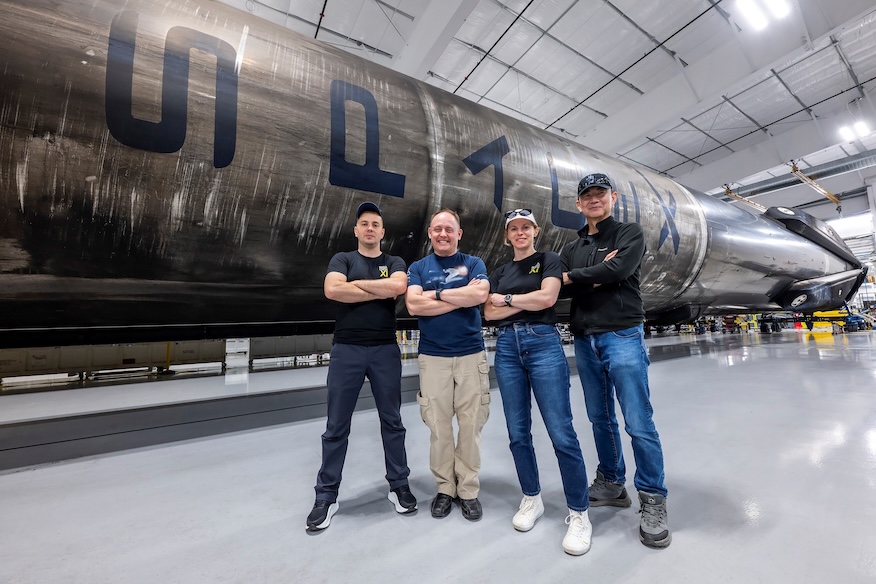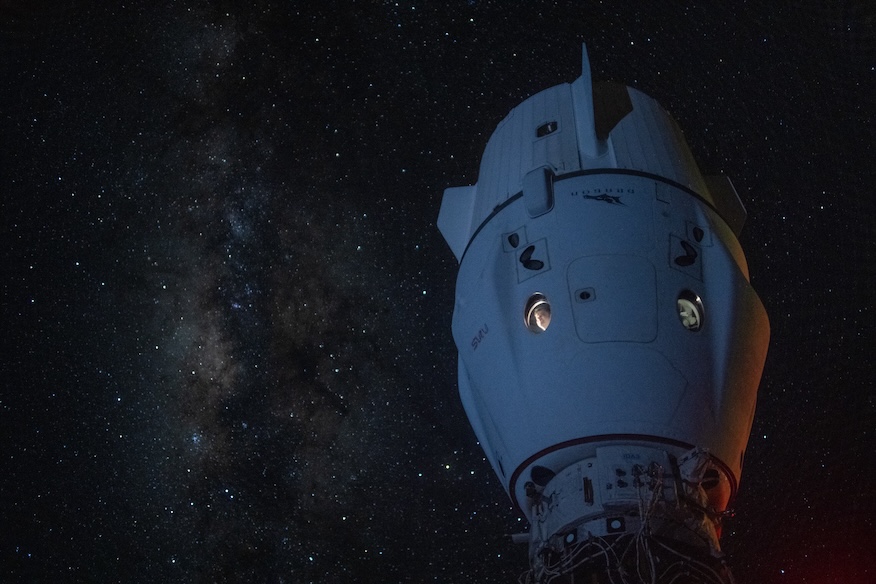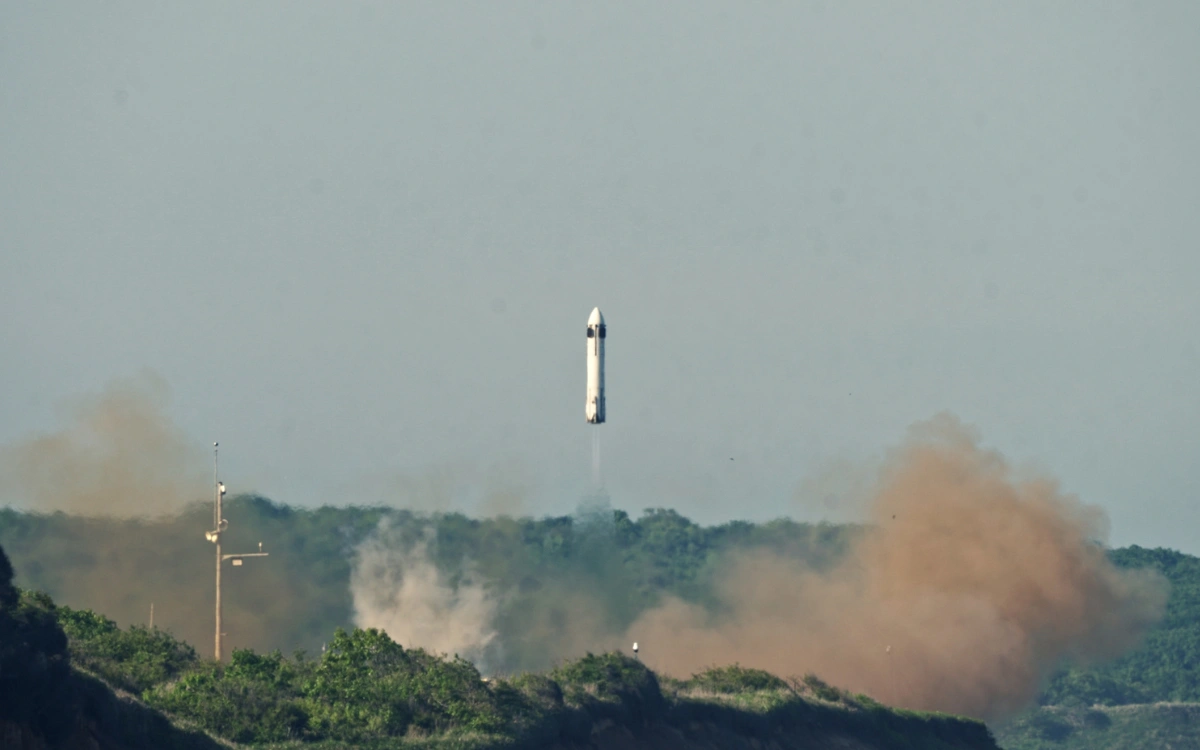
The next four-person crew heading to the International Space Station is less than three weeks away from launch. On Thursday, NASA announced that it and SpaceX were targeting July 31 for the flight of SpaceX’s Crew-11 mission to the orbiting outpost.
The penultimate Dragon mission for 2025 is set to liftoff from Launch Complex 39A at NASA’s Kennedy Space Center at 12:09 p.m. EDT (1609 UTC). The mission is led by NASA astronaut Zena Cardman. She will be flying along with fellow NASA astronaut Mike Fincke, Japan Aerospace Exploration Agency (JAXA) astronaut Kimiya Yui and Roscosmos cosmonaut Oleg Platonov.
This will be the first flight for both Cardman and Platonov. Yui is flying to space for a second time and it will be the fourth flight for Fincke.
Beyond the usual weather considerations for a crewed launch, teams at NASA and SpaceX are also closely watching the transit time between launch and the planned docking with the space station. Prior to launch, there will be an orbital boost of the ISS by a Russian Progress vehicle, which may push the transit time beyond Dragon’s 40-hour limit for fuel and consumables.

“We protect all our potential contingencies, so we’ll watch that really carefully,” said Steve Stich, manager of NASA’s Commercial Crew Program. “If we trip over that limit, we would go to the backup day on August 1.”
Stich said if needed, they have a good run of launch dates available, starting with Aug. 1-3. He said another long phasing precludes Aug. 4 as a backup date, but that is followed by have another three-day stretch of available dates.
The mission was moved up from its previously planned August launch window in order to create more room in the manifest for the arrival of the Cargo Dragon flying the CRS-33 mission. That Dragon will perform a boost of the space station as a demonstration of some of the capabilities SpaceX will use on its U.S. Deorbit Vehicle currently in work.
Dragon extension
Crew-11 will fly to the orbiting outpost on Crew Dragon Endeavour, which will be its sixth trip to the ISS. This will be the first Crew Dragon spacecraft to fly for a sixth time. It previously flew Demo-2, Crew-2, Axiom-1, Crew-6 and Crew-8.
“It’s been a big year for Commercial Crew in terms of getting to 5 [times] reuse on our Falcon 9 boosters, moving all of our landing operations from the East Coast to the Pacific and then also, working on extended Dragon reuse.” Stich said. “We’ve had to go through and do a recertification effort of Dragon, working hand-in-hand with SpaceX to get to six flights.”

Stich said the NASA and SpaceX teams reviewed more than 360 elements on the vehicle that will certify the vehicle for a sixth flight. He noted that some pieces of Dragon are certified for up to 15 flights, which is the ultimate goal for the entire spacecraft.
Dragon Endeavour was transported to SpaceX’s fueling facility, known as “Dragon Land,” to load propellant on the vehicle ahead of the final integration campaign. As with previous crewed missions, there will be a dry dress rehearsal of launch day activities followed by a fueling test of the Falcon 9 rocket that culminates in a short, static firing of the nine Merlin engines on the booster.
That first stage booster, tail number B1094, previously launched Starlink 12-10 and Axiom Mission 4.
NASA and SpaceX are also looking at the possibility of extending the length of the Crew-11 flight from the baseline of six months out to seven or possibly eight months, which would match a change in flight profiles for the Russian Soyuz missions moving forward.
“SpaceX is in the process of delivering the rest of the data for extending the mission out into eight months,” Stich said. “It’ll probably take us a month or so to go through that data after we launch.”

Quarter century of human presence in LEO
The Crew-11 quartet has the distinction of being onboard the ISS when it marks its 25th anniversary of operations in October.
“That’s going to be a huge milestone. A great testament to the work of our commercial partners, our international partners and the whole NASA team,” said Ken Bowersox, a former astronaut and the current associate administrator of the Space Operations Mission Directorate.
Fincke, who helped construct the space station during the shuttle-era, said it’s an honor that his fourth flight will allow him to be onboard during that key milestone.
“I remember when space station was just pieces here on the ground and I cannot say how amazed and proud I am of human beings from all over this planet, working together pretty darn well to build this International Space Station,” Fincke said. “I know it’s coming near it’s time, but this is something that I think that humans should just really remember all the cool things we can do when we work together constructively.”
Source link

